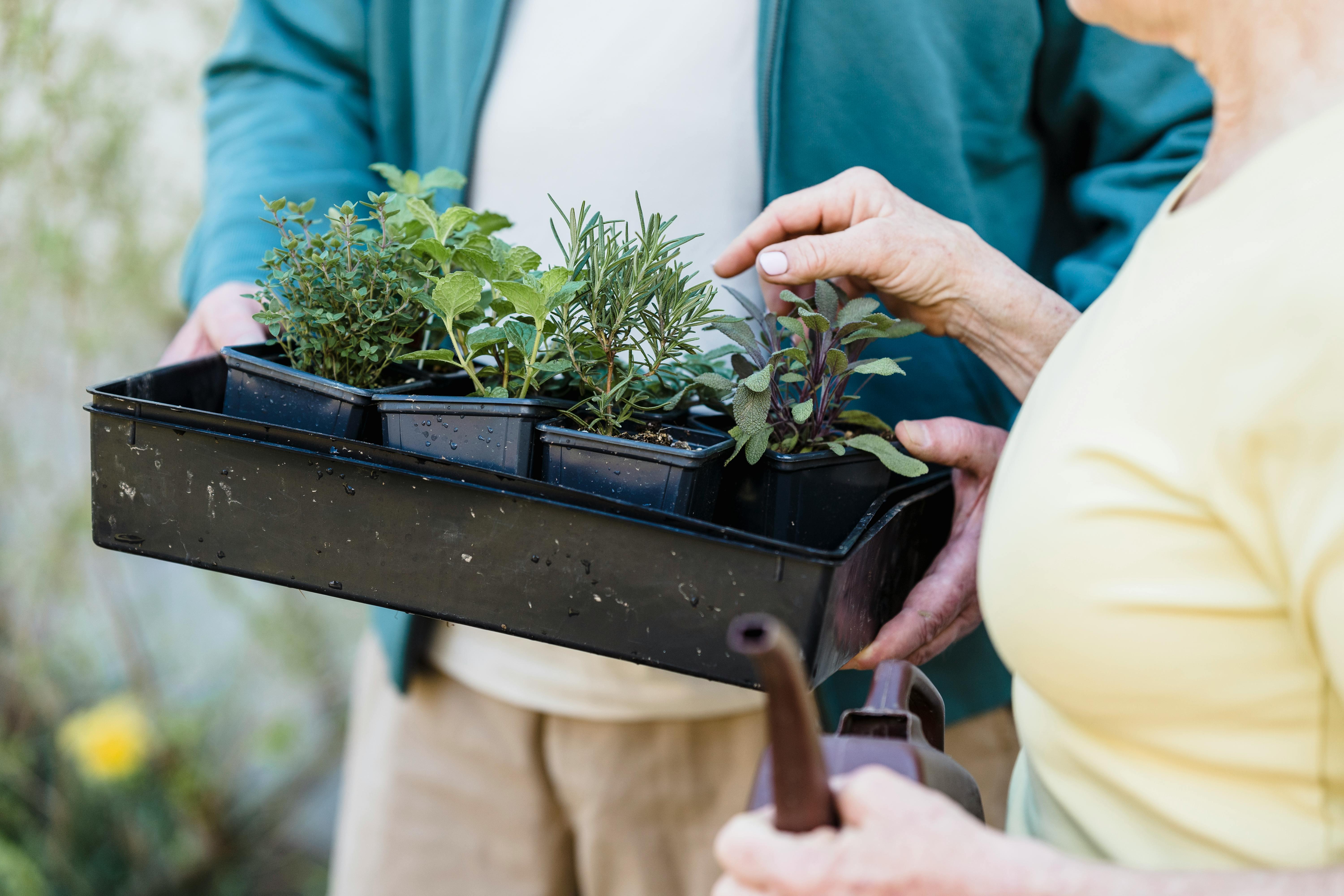Jasmine and lavender are two of the most beautiful and fragrant plants available. Both are popularly used in gardens, landscapes, and even medicinal purposes. If you’re wondering whether it’s possible to plant jasmine and lavender together, then the answer is yes! Although both plants have different growing requirements, with a little extra care and attention, you can successfully grow them together. In this article, we’ll discuss how to go about planting jasmine and lavender together.To successfully plant jasmine and lavender together, the following requirements should be met:
1. Choose a sunny location with well-draining soil for planting.
2. Plant jasmine and lavender at least 3-4 feet apart to allow enough space for growth.
3. Water the plants regularly to maintain soil moisture levels and avoid over-watering.
4. Prune both plants regularly to maintain their shape and encourage growth.
5. Provide adequate fertilization to ensure healthy plant growth and flowering.
6. Place mulch or ground cover around the plants to add nutrients to the soil and retain moisture levels in the soil during hot, dry weather conditions.
Jasmine
Jasmine plants require a soil that is well-draining and slightly acidic. A good mix for jasmine would be two parts potting soil, one part perlite, and one part sand. The slightly acidic pH should range between 6.0 and 6.5. Jasmine also needs plenty of organic matter mixed in with the soil to help retain moisture while providing adequate nutrients for the plant to thrive in. Compost or peat moss are ideal materials to use for this purpose.
Lavender
Lavender prefers a light, well-draining soil with a slightly alkaline pH level of around 7.0 to 8.0. A mix of two parts potting soil, one part sand, and one part perlite works well for lavender plants as it provides the necessary drainage and aeration while still holding onto some moisture in the soil for the plant to absorb. Adding organic material such as compost or peat moss will also help keep the roots moist and provide additional nutrients for growth.
Does the Location of Planting Matter for Jasmine and Lavender?
When choosing to grow jasmine and lavender, the location of planting is an important factor. Both jasmine and lavender need full sun to thrive, so it’s best to choose a spot in your garden that receives at least six hours of direct sunlight a day. It’s also important to select a spot with well-drained soil, as jasmine and lavender do not tolerate wet soil. If you’re planting in containers, make sure they have good drainage holes at the bottom.
Jasmine prefers warm temperatures while lavender can tolerate cooler temperatures. Jasmine thrives in temperatures ranging from 65 to 75 degrees Fahrenheit while lavender is more tolerant of lower temperatures and can survive down to 15 degrees Fahrenheit. Depending on your climate zone, you may need to bring your jasmine indoors during cold winter months or if the temperature drops below 50 degrees Fahrenheit.
When planting both jasmine and lavender, it’s important to give them plenty of space to spread out so they don’t become overcrowded. Depending on the variety you choose, jasmine can reach a height of 6-15 feet while lavender typically only grows up to 18 inches tall. It’s best to give each plant at least 1-2 feet of space between them so they have plenty of room for growth.
Finally, when planting either jasmine or lavender it’s important to fertilize the soil before planting and add compost or mulch after planting for extra nutrients. Jasmine and lavender are both easy-to-care-for plants that require minimal maintenance but will reward you with fragrant blooms throughout the growing season if planted in an optimal location.
Planting Jasmine and Lavender Together
Planting jasmine and lavender together can be beneficial to both plants. The combination of two different plants can provide a range of benefits that could not be achieved by either one alone. The fragrances from these two different plants will combine to create a sweet, pleasant aroma that will fill the air. Additionally, the contrasting colors of the jasmine and lavender flowers can create an attractive display in your garden or outdoor space.
Jasmine is known for its ability to deter insects, while lavender is known for repelling rodents and other small animals, making them both effective natural pest repellents. When planted together, they provide an even more effective barrier against pests. These two plants also work together to help each other grow. Lavender helps to increase the soil’s drainage capacity, while jasmine helps to retain moisture in the soil, making it easier for both plants to thrive in soil that would otherwise be too dry or too wet for either plant alone.
By planting jasmine and lavender together, you are also creating a habitat for beneficial insects like bees and butterflies that are necessary for pollination and helping your garden thrive. The combination of these two plants is also beneficial for soil health as they improve the quality of the soil by adding essential nutrients such as nitrogen, phosphorus, magnesium and potassium back into it.
Overall, planting jasmine and lavender together has many advantages including providing a pleasant fragrance to your outdoor area, creating an attractive landscape with their contrasting colors, acting as natural pest repellents, improving soil health and creating habitats for beneficial insects like bees and butterflies.

Jasmine and Lavender Plants
Jasmine and lavender plants are two of the most popular and fragrant flowering plants often used in gardens, landscaping, and aromatherapy. While they both have beautiful flowers and a pleasant scent, there are some differences between them.
In terms of appearance, jasmine plants have small white or yellow flowers with a strong scent. The leaves are glossy, dark green in color, and arranged in an opposite pattern. On the other hand, lavender plants have grey-green foliage with spikes of purple or blue flowers. The leaves are long and narrow with a soft texture.
In terms of growth habit, jasmine is a climbing vine that can reach up to 15 feet tall while lavender is an upright shrub that typically grows between one and three feet tall. Jasmine prefers full sun while lavender likes partial shade. Jasmine is more tolerant of wet soil conditions while lavender prefers dry soil.
In terms of fragrance, jasmine has a sweet floral scent whereas lavender has a more herbal smell with woody undertones. Jasmine’s scent is stronger than lavender’s when it blooms but the scent dissipates quickly once it fades away. Lavender’s fragrance lingers longer than jasmine’s after it has been cut or dried for use in potpourri or sachets.
Overall, jasmine and lavender plants have different appearances, growth habits, and fragrances that make them unique from each other. Both are popular choices for gardens and landscaping due to their beautiful flowers and pleasant scents but they should be chosen based on individual preferences for aesthetics and odor.
Caring for a Garden with Both Jasmine and Lavender Plants
Caring for a garden with both jasmine and lavender plants requires attention to the requirements of both plants. Sunlight is essential for both plants, as well as well-drained soil and regular watering. Lavender prefers full sun, while jasmine can handle partial shade. To ensure that both plants have access to adequate drainage, add mulch or organic matter to the soil in order to avoid waterlogging. Additionally, fertilizing the plants regularly will promote healthy growth.
When it comes to pruning and trimming, lavender is best pruned in late winter or early spring before new growth begins, while jasmine should be trimmed in late spring after flowering has ended. It is also important to deadhead spent flowers on both types of plants, as this will encourage further blooming.
Both lavender and jasmine can be prone to pests and diseases if not cared for properly. Regularly check your plants for signs of infestation or infection so that you can take action right away if necessary. In order to prevent pests from attacking your garden in the first place, make sure to keep the area clean by removing fallen leaves and debris regularly.
Finally, it is important to remember that while both jasmine and lavender prefer full sun, they may need some protection from the heat during summer months. Providing shade cloth or other forms of protection from intense sunlight will help ensure your plants stay healthy during hot weather. With proper care and attention, your garden with jasmine and lavender will provide you with beautiful fragrant blooms all season long!
Growing a Garden with Jasmine and Lavender in Containers
Growing a garden with both jasmine and lavender in containers is possible and can be a great way to add vibrant colors and fragrances to your outdoor space. Container gardening allows you to create a garden that is easy to move around, as well as one that can be tailored to fit any size or shape of container. It also offers the advantage of being able to take it with you if you move.
Jasmine is an evergreen climber that produces fragrant white flowers from spring through summer. The best containers for jasmine are large enough for the roots to have plenty of room to spread out, as well as somewhere where it can get plenty of sunshine. Make sure the pot has drainage holes at the bottom so that excess water can escape, as jasmine does not like wet feet.
Lavender is an aromatic shrub that produces lovely purple flowers from spring through summer. The best containers for lavender are shallow rather than deep, so that the roots don’t become waterlogged. Make sure the pot has drainage holes at the bottom so that excess water can escape, as lavender does not like wet feet either. A sunny spot is ideal for growing lavender in containers, but make sure it has somewhere where it will get some protection from harsh afternoon sun or winds.
When growing both jasmine and lavender together in containers, it’s important to make sure they are separated by at least two feet so they don’t compete for nutrients or start overcrowding each other. It’s also important to water them regularly but not too often – once a week should be enough – and give them enough fertilizer throughout the growing season. Finally, remember to prune them regularly so they stay healthy and look their best!

Conclusion
Jasmine and Lavender are both popular choices when it comes to planting in the garden. They are both easy to grow and have attractive fragrant flowers. However, these two plants should not be planted together due to their different growing requirements and the potential for competition between them. It is best to keep them separated in order to ensure that they can reach their full potential in the garden.
Overall, when it comes to selecting plants for your garden, there are many factors that must be taken into consideration. Planting Jasmine and Lavender together might seem like a good idea, but they should be kept separate for the best results. By understanding the needs of each plant, you can ensure that your garden is filled with beautiful and fragrant flowers throughout the year.

